The "Royal Chariot" relief,
a feature work from
the 1998 Spring Exhibition
comes back to life
at the MIHO MUSEUM.

Relief with Two Horses
Iran, Persepolis,
Achaemenid period,
486 - 465 BC
Limestone
Height 37.7 cm. Width 38.1 cm. Depth 9.0 cm
Darius I, who reigned during the Achaemenid Dynasty, commissioned
the autumn palace at Persepolis. It is thought that he built the splendid
capital with materials and personnel from regions and nations both within
and without the Persian Empire. It is also believed that this massive building
project may have been planned as a revolutionary unification of the world
according to the teachings of Zoroastrianism. The result, however, was an
amalgam of artistic styles of the ancient orient. The "royal chariot" relief
from the collection of the British Museum, originates from the ornamentation
in the east wing of an assembly hall or apadana in Persepolis, specifically
from a wall of the Northern Stairway. It was originally adjoined to the "two
horses" relief in the MIHO MUSEUM collection.
There are several such reliefs from Persepolis in the collection
of the British Museum, all of which were once part of the collections of Sir
Gore Ousley, British ambassador to Tehran at the beginning of the 19th century,
and Lord Aberdeen. However, the "two horses" relief was not included to the
British Mueum pieces, when they were introduced into there. Upon its opening,
the MIHO MUSEUM was fortunate enough to borrow the "royal chariot" relief
from the British Museum, making this the first time ever that the two pieces
have been reunited in their original form. After the closing of the Spring
exhibition on June 10, the two pieces will travel together to England, where
they will be on display at the British Museum.
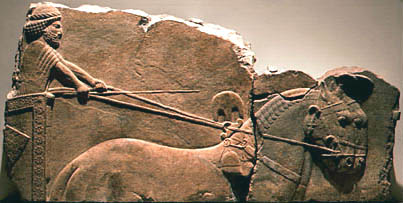 Royal Chariot
Royal Chariot
Iran, Persepolis, Achaemenid
period, 486 - 465 BC
Limestone
Height 54.8 cm. Width 80.7 cm.
Depth 9.0 cm.
British Museum
Collection(BM118843)
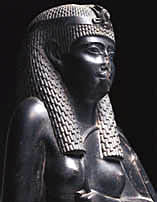
Statue of Queen Arsinoe II
Egypt, Ptolemaic period, early 3rd century BC
Wife of Ptolemy II, Arsinoe II is here portrayed as Isis the goddess of love and fertility. With a water lily scepter in her hand and a smile on her face, this statue deftly commu-nicates the goddess's character.
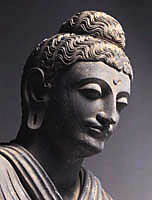 Standing Buddha
Standing BuddhaPakistan, second half of the 2nd century AD
Among the many images of the standing Buddha from Gandhara, this figure is one of the largest. With a compassionate and welcoming gaze, this statue seems to be offering a warm greeting to all who approach it.
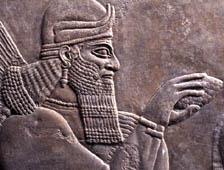 Winged, Human-headed Genius and Royal Attendant
Winged, Human-headed Genius and Royal AttendantNortheastern Iraq, Assyrian period, early 9th century BC
This stone relief originally decorated a wall in the palace of king Ashurnasirpal II. The carving gives one a sense of the great power and majesty that the Assyrian nation and its king enjoyed.
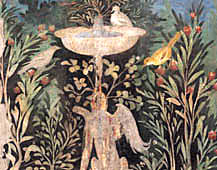 Fresco Panels Depicting a Garden
Fresco Panels Depicting a GardenRoman, 1st century AD
This depiction of an earthly paradise creates an illusion of depth that extended the space of an enclosed garden far beyond the garden walls that it may have once decorated. Due to the fresco method, its vivid colors have lost none of their brilliance.
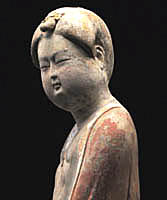 Court Lady
Court LadyChina, Tang period, 8th - 9th century AD
With her head tilted to the left, this figure leans very slightly to the right. The work sensitively depicts the plump face of the ideal Tang beauty who was thin, had long slit eyes, a small nose, and lips that betray an incipient smile.